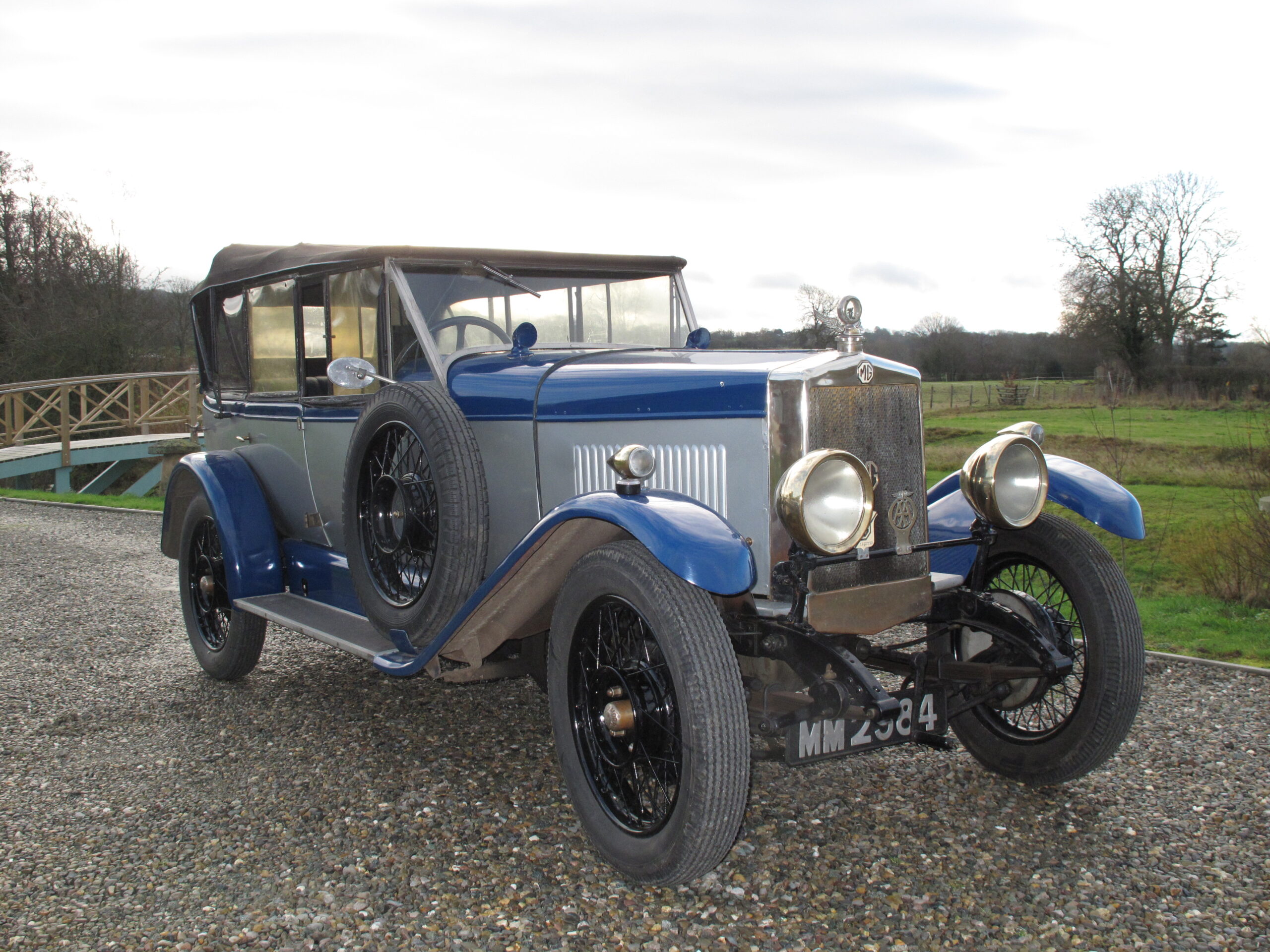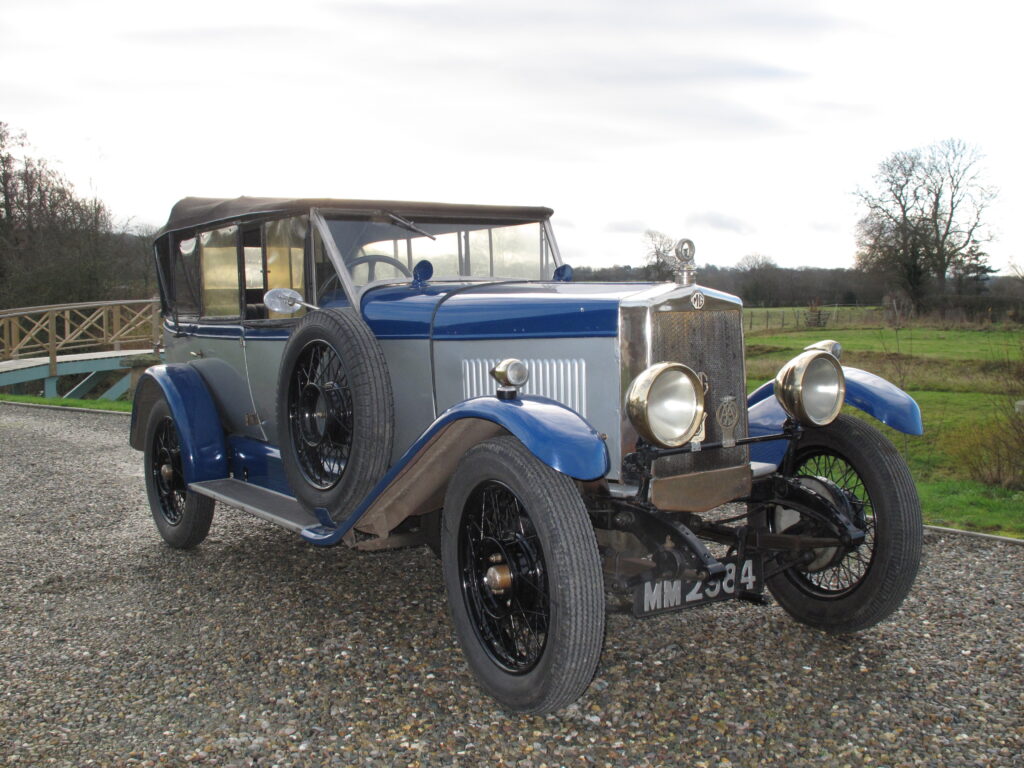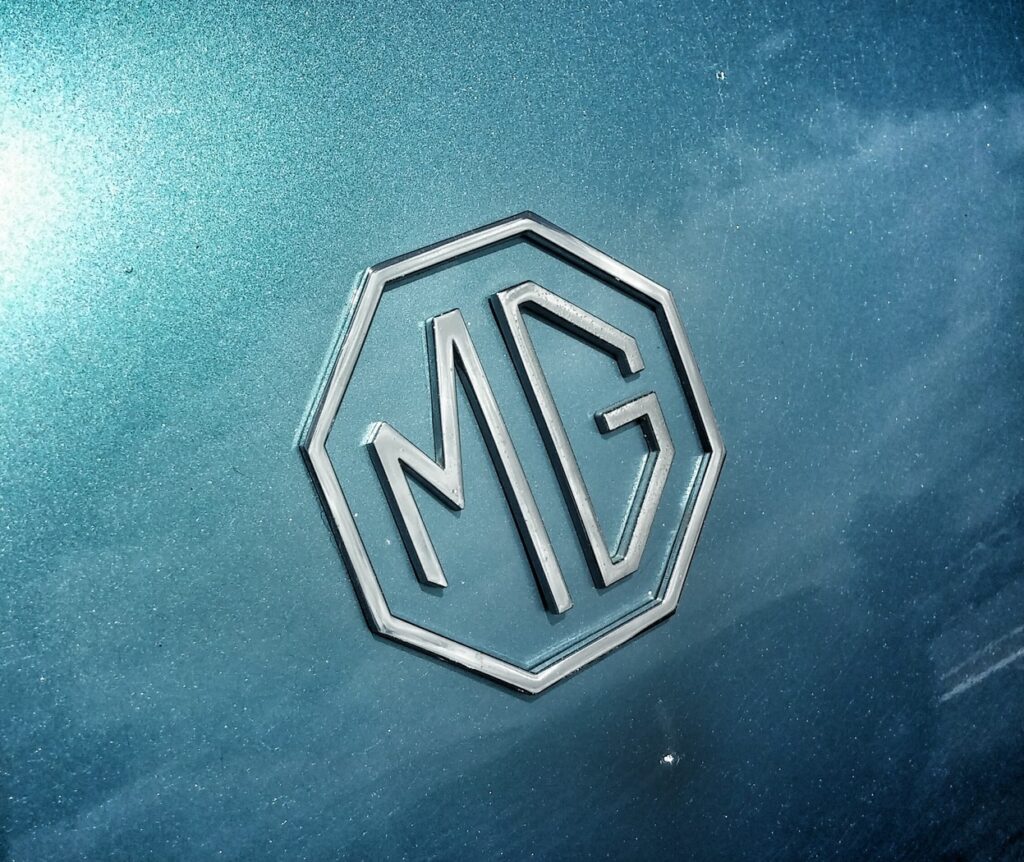
In the early 1920s, Cecil Kimber identified a niche market for faster and sportier cars. At the time he was the General Manager of Morris Garages, owned by William Morris. Although Kimber had already designed new coachwork for cars using Morris chassis, the first model he launched as an MG was in 1924; which he called the MG 14/28 Super Sports. This consisted of a more sporting design of body but used a classic Morris 14/28 ‘Bull Nose’ Oxford chassis. These early models are commonly known as ‘Morris Garage Chummies’. It is estimated that over 400 were built between 1924 and 1927.

The MG 14/28 morphed into the MG 14/40 in 1927, using a Morris Oxford ‘Flat Nose’ design rather than the ‘Bull Nose’. There were several design improvements including the addition of bolt-on wire wheels. The MG 14/40 became the first to feature the MG octagon badge on the radiator.
Kimber chose the ‘MG’ letters for the name of his new range of cars out of respect for his employer William Morris, owner of Morris Garages. The classic octagon badge and logo design was registered as a trademark in 1924 and variations still feature on MG cars built by present MG brand owners Nanjing Automobile Group.

In 1928, Kimber launched the first MG that was not based on a Morris Oxford chassis. The MG18/80 was built until 1933. In 1929, due to the increasing popularity of the MG and an increase in demand, production moved to Abingdon where it would remain for the next 50 years.
Since 1924, the MG brand has seen many highs and lows, but the classic small sports car remains a favourite of car enthusiasts around the world. All thanks to Cecil Kimber.
Classic MGs, such as the MG Midget, MGA, MGB, MGB GT V8, and MGC, all used gauges designed and built by SMITHS Instruments. Many of these gauges are available today, built using the original drawings.
For further information on SMITHS gauges for classic MG sports cars, please contact us on:
Email: [email protected]
Phone: +44 (0) 1639 732200
You can also follow us on social media including Facebook (@caigauge) and Twitter (@caigauge) for regular news and technical features.